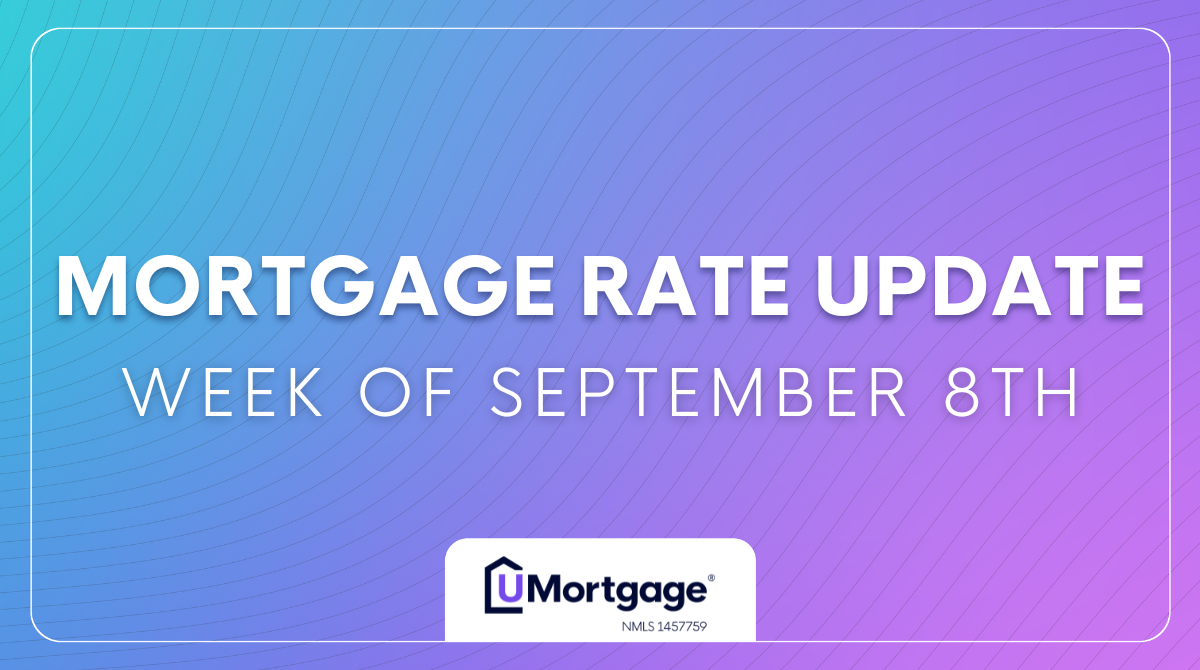

Andrew Keller
Meet Andrew!
As your trusted UMortgage Loan Originator, my goal is to simplify the mortgage process to make your home loan experience easy to navigate! Please reach out so I can help start your home financing journey.
Serving Homebuyers In:
- Florida
- New Jersey
- Pennsylvania
- Virginia
Mortgage Calculators
Monthly Payment
Find your monthly payment
What does a monthly mortgage payment look like for you? Get an estimate with some basic information.
Estimated Monthly Payment
The UMortgage mortgage calculators are for estimation purposes only. This is not a commitment to lend. For an exact quote based on your individual financial circumstances, please contact me.
Affordability
What is your budget?
Curious about how much you can afford to spend on a home? Use our calculator to get an estimate on your maximum budget.
Maximum Home Price
Maximum Monthly Payment
The UMortgage mortgage calculators are for estimation purposes only. This is not a commitment to lend. For an exact quote based on your individual financial circumstances, please contact me.
Refinance
Should you Refinance?
Refinancing might save money on your monthly mortgage payments, putting cash in your pocket. With some basic information from you, we can help decide if this is a good path for you.
Monthly Savings
Total Savings
The UMortgage mortgage calculators are for estimation purposes only. This is not a commitment to lend. For an exact quote based on your individual financial circumstances, please contact me.
VA Entitlement & Payments
Discover Your Buying Power With Our VA Home Loan Calculator!
If you are a veteran, an active-duty member of the military, or the spouse of a current or former military member, you are eligible to purchase a home with your VA home loan benefit! By using the calculator below, you can get a glimpse into your buying power and the estimated monthly payment of your VA loan as you start planning your homebuying journey.
Estimated Monthly Payment
Required Down Payment
Limit
$0
Entitlement Used
$0
Available Entitlement
$0
No Limit
How is my monthly payment calculated?
The UMortgage mortgage calculators are for estimation purposes only. This is not a commitment to lend. For an exact quote based on your individual financial circumstances, please contact me.
Your Mortgage Questions, Answered!

Housing Market Update | Week of September 8th
Mortgage rates dropped to a new yearly low after last week’s jobs data highlighted a terrible current state of the labor market. Total nonfarm payroll employment was just 22,000 in August, significantly lower than estimates of +75,000. Overall, job growth has stalled since April. This data all but confirmed that the Fed should cut rates during its September meeting next week. Once these job numbers came in, the 10-year yield plummeted; it peaked last week at 4.3% and has since dropped all the way to 4.05% as of this morning. This took the mortgage rate to a new yearly low with room to fall further. We have our PPI and CPI inflation reports coming this week. So long as inflation doesn’t rise out of control, we could see rates inch closer to 6%. Last Week's Mortgage Rate Recap Rates Dropped Mortgage rates plummeted on Friday after the BLS jobs report came in significantly lower than expected. The headline figure of 22,000 jobs created in August was significantly lower than expectations and brought the unemployment rate up to 4.3%. Not only that, but June’s job figures were also revised lower to a negative number, breaking a 54-month streak of job gains reported by the BLS. The average duration of unemployment rose to 24.5 weeks, which is the highest since April 2022 and suggests that people are having a hard time finding a job once they’re unemployed. The Federal Reserve has long suggested that, to justify a rate cut, the labor market would have to weaken significantly. The jobs data since April has shown little to no growth, which has led most economists to expect at least a 0.25% cut to the federal funds rate next week and between 2 and 3 rate cuts between now and the end of the year. This Week's Mortgage Rate Forecast Rates Have Room to Drop More This week has two primary focuses: the market’s continued reaction to last week’s labor data and a fresh batch of inflation data on Wednesday and Thursday. With inflation continuing to highlight the impact of tariffs on the economy, the Fed will keep an eye on these figures. Unless inflation rises out of control, though, these figures shouldn’t have much of an impact on rates. Currently, economists expect core CPI and core PPI to each rise by 0.3%. Now more than ever, your buyers are likely wondering what these headlines mean for them. It’s important to note that mortgage rates usually drop before the Fed cuts rates and tend to rise slightly after the rate cut is official. If you have any questions about the market or want to connect any of your buyers with a UMortgage Loan Originator, follow this link to connect with an expert near you!

How the Federal Reserve Impacts Mortgage Rates (And How It Doesn't)
If you’ve been watching the news lately, you’ve probably seen a lot of headlines about the Federal Reserve and interest rates. And if you're a homebuyer or a real estate agent working with buyers, you might wonder: Does the Federal Reserve control mortgage rates? It’s a great question. And the short answer is: Not necessarily. The longer answer is a bit more nuanced because while the Fed does play an important role in the economy, it doesn't directly control mortgage rates. What Is the Federal Reserve and the Federal Funds Rate? The Federal Reserve, often referred to simply as the Fed, is the central bank of the United States. Its primary job is to keep the economy healthy by keeping inflation in check, supporting the labor economy, and promoting stable & sustainable economic growth. One of the main tools the Fed uses to manage the economy is the Federal Funds Rate. This is the interest rate banks charge one another for overnight loans. While consumers don’t pay this rate directly, it has a ripple effect across the economy, influencing rates on credit cards, auto loans, and savings accounts. How the Federal Funds Rate Influences the Economy When the Fed raises the Federal Funds Rate, it becomes more expensive for banks to borrow money. That tends to result in higher borrowing costs for consumers and businesses in an attempt to slow down inflation and prevent the economy from overheating. When the Fed lowers the rate, borrowing becomes cheaper. This encourages more spending and investment, often a strategy used during economic slowdowns or recessions. Important distinction: The Federal Funds Rate influences the economy, but it does not directly control mortgage rates. Why Mortgage Rates Don’t Always Follow the Fed Here’s where a lot of confusion begins. Many people assume that when the Fed raises interest rates, mortgage rates automatically rise too. But that’s not how it works. Mortgage rates are driven by a different set of economic factors, mainly the bond market. Specifically, rates are closely tied to the 10-year Treasury yield and the performance of mortgage-backed securities (MBS). Investors who buy these securities care most about the labor market, inflation, the long-term economic outlook, and market stability/instability If inflation is rising or expected to rise, mortgage rates tend to increase. If economic conditions appear weak or uncertain, rates can fall, even if the Fed is raising the Federal Funds Rate. In fact, mortgage rates often move in anticipation of what the Fed might do, not just in response to what it has done. The markets are always looking ahead. What Really Drives Mortgage Rates? Here’s a quick snapshot of the major factors that impact mortgage rates: Inflation: Higher inflation usually = higher mortgage rates. Economic Growth: A strong economy can lead to higher rates. Global Events: Uncertainty (like geopolitical conflict or pandemics) can drive rates lower. Bond Market Demand: More demand for mortgage bonds often = lower mortgage rates. In other words, mortgage rates are influenced by a wide range of factors and are always forward-looking. Want more in-depth analysis of the housing market? Check out our weekly Housing Market Update blog. How Homebuyers and Real Estate Can Navigate the Market For homebuyers and the real estate agents supporting them, the key takeaway is this: Don’t assume that a Fed rate cut means mortgage rates are going down. In some cases, mortgage rates don’t move much on the day that the Fed cuts rates. Most of the time, they will drop in the lead-up to a Fed Meeting if a rate cut is expected. Other times, they might drop after a Fed announcement, depending on how markets interpret the economic outlook. If you’re considering buying a home or are an agent for a hesitant buyer, here’s how you should navigate periods of market instability: Focus on personal goals and timing, rather than trying to time the market. Work with a knowledgeable mortgage professional who can explain how market shifts impact your unique situation. Make informed decisions based on the bigger picture, not just headlines. Whether you're buying, selling, or considering a refinance, UMortgage Loan Originators are here to help you navigate the market with confidence and leverage homeownership to build wealth. If you’re curious about your homebuying or refinance options and want expert guidance, fill out this form to get connected with a UMortgage Loan Originator in your area!

How to Consolidate Debt Using Your Home Equity
If you’re like many homeowners holding off on refinancing because you don’t want to lose your low mortgage rate, it might be time to look at the bigger picture. Yes, rates aren’t what they were a few years ago. However, credit card debt is at record highs, with average interest rates north of 20%. For households juggling thousands in revolving debt, it’s not the mortgage rate that’s crushing monthly cash flow; it’s those high-interest minimum payments. If you’re feeling financially squeezed, loan products like a cash-out refinance or home equity line of credit (HELOC) can help you take control by using your home’s equity to consolidate debt and reclaim hundreds, sometimes thousands, in monthly breathing room. Brian Cardenas, UMortgage Loan Originator, has been using these strategies to save his clients hundreds of dollars per month. “Money is one of the biggest stressors that we experience in our lives,” said Cardenas. “People are sitting on a ton of equity and a really low interest rate on their home. But they also have this albatross around their neck of this high-interest debt that’s just crushing them.” According to the Federal Reserve Bank of New York, total outstanding credit card debt stood at approximately $1.21 trillion by the end of Q4 2024 – a $45 billion increase from the prior quarter, marking a 7.3% year-over-year rise. At an average APR of 21.37%, as reported by the Federal Reserve in February 2025, that extra debt adds up fast. With a cash-out refi or HELOC, you’re using the money you’ve already invested in your home instead of taking on more debt with high-interest credit cards or personal loans. Here’s how each works, so you know your options before you commit. What is a Cash Out Refinance and How Does One Work? A cash-out refinance allows homeowners to replace their current mortgage with a new loan that provides extra funds by tapping into the equity homeowners have built in their property. Essentially, homeowners can "cash out" a portion of their equity to use as they see fit. This process works by allowing homeowners to borrow against their home equity, which is the difference between the home’s appraised market value and the remaining mortgage balance. By taking out a larger loan, the borrower receives the excess in cash after paying off the original mortgage. For a clearer picture of how this can work, use UMortgage’s Refinance Calculator to see what a cash-out refi might look like for you. What is a HELOC Loan and How Does One Work? A Home Equity Line of Credit (HELOC) is a loan that lets you borrow against your home’s equity without replacing your existing mortgage. Think of it like a credit card that can be used, repaid, and used again over time. This flexible borrowing option is based on the difference between the home’s current market value and the outstanding mortgage balance. Homeowners can draw from the line of credit as needed, whether for home improvements, debt consolidation, or other significant expenses, and only pay interest on the amount they use. Why You Should Consult with an Expert Before You Act Accessing your equity is just like any other mortgage product: there’s no one-size-fits-all option. That’s why it’s so important to consult with a mortgage expert before you pull the trigger. Working with a UMortgage Loan Originator takes out the guesswork; you’ll have someone in your corner who will present you with all your options so you can make an informed decision that works best for your financial future. “After crunching all the numbers, I found out that there were some considerable savings that we can present to this borrower and help relieve some of the financial burdens that they’re experiencing every single month,” said Cardenas regarding a client whose debt he consolidated earlier this year. “We’re just simply presenting options and letting the consumer decide which, if any of these options, is going to fit their needs best.” If you want to discover your options to consolidate your debt with your home’s equity, or learn more about HELOC rates, fill out this form to connect with a UMortgage Loan Originator in your area. They’ll reach out shortly after you submit to start the process.
Serving Homebuyers In:
- Florida
- New Jersey
- Pennsylvania
- Virginia
